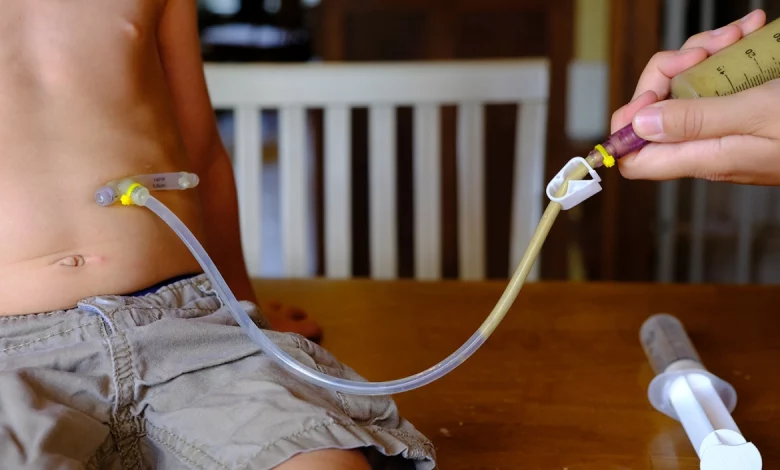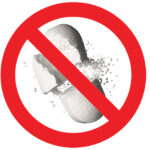How To Crush Pills and Tablets For Tube Feeding

What is a feeding tube?
A feeding tube is a medical device used to feed a person who is unable to eat or drink. Tube feeding is a way of getting your body the nutrition it needs. Tube feed is a liquid form of food that’s carried through your body through a flexible tube. The nutrients within the tube feed are similar to what you would get from normal food. They are also digested in the same way. Tube feeds contain all the nutrients you need daily, including carbohydrates, proteins, fat, vitamins, minerals, and water. The feeding tube is sometimes used to administer medications to those patients who have difficulty swallowing.
Types Of Feeding Tubes
The are several types of feeding tubes through which feed can be given to a patient, they include:
o Nasogastric feeding tube (NG)
o Nasojejunal feeding tube (NJ)
o Gastrostomy tubes, e.g. percutaneous endoscopic gastrostomy (PEG), radiologically inserted gastrostomy (RIG)
o Jejunostomy tubes, e.g. surgical jejunostomy (JEJ), jejunal extension of percutaneous endoscopic gastrostomy (PEG-J)
Your healthcare professional will recommend the type of feeding tube that’s best for you.
Gastrostomy and jejunostomy tubes are less visible than NG or NJ tubes. They need to be placed during surgery. This forms the so-called stoma site.
NG or NJ tubes do not need surgery for placement. They are more visible than a gastrostomy or jejunostomy tube. But putting in NG or NJ tube may cause discomfort.

| TYPE OF FEEDING TUBE | WHERE THE TUBE IS INSERTED | WHEN IT’S USED |
| Nasogastric (NG) feeding tube | Through the nose, down the esophagus, and into the stomach | Usually for short-term tube feeding (six to eight weeks) |
| Nasojejunal (NJ) feeding tube | Through the nose, down the esophagus, through the stomach, and into the small intestine (jejunum) | When feeding into the stomach isn’t tolerated |
| Gastrostomy tube (e.g. PEG or RIG) | Directly into the stomach through a small incision in the abdomen’s skin | For long-term use (more than six weeks) |
| Jejunostomy tube (e.g. JEJ or PEG-J) | Through the stomach and into the small intestine (jejunum) (PEG-J) or directly into the small intestine (jejunum) (JEJ) through a small incision in the abdomen’s skin | For long-term use (more than six weeks) |
Is crushing pills for tube feeding safe?
Crushing pills for a feeding tube is generally not a problem, as long as the rules and medication safety protocols are followed.
Most pills can be crushed, put in water, and poured down the tube. They have to be well crushed so investing in some sort of pill crusher is helpful. A simple mortar and pestle (bowl with a rounded club) work well. It is hard to find as a medical product—look for it as a cooking tool. There are many other types of crushers available but if your caregiver has arthritis, you may have to try a couple of them before you find a usable one.
The problem medications are those that are designed to release slowly into the digestive tract for longer, more even effects. If crushed the entire dose will hit all at once and that is not at all good. These medicines usually have sustained-release [SR], extended-release [ER, XR, XL], and controlled-release [CR], after their name. Often they are capsules with beads of medication inside. If a tablet has a line scored across it for cutting, it can be crushed as can meds labeled as immediate-release (IR) Try to remember to let your doctor know that you need crushable or liquid medication and double-check with the pharmacist. See the list of “Do Not Crush” medications at Do Not Crush List. Examples include Tamoxifen Methotrexate, Dutasteride, and Finasteride. These have cancer-causing or baby-harming potential when crushed or tampered with. They are hormonal or chemotherapeutic drugs.
How To Crush Pills For Feeding Tube
Medications prescribed in a liquid form go through the tube easily. However, some medications may only be available in pill form and need to be crushed small enough to go through the tube without clogging it.
Here is how to crush pills for tube feeding:
• Wash your hands before handling the tubing and medication.
• Crush pills and dissolve them in 1⁄2 cup room temperature water or pour the prescribed amount of liquid medicine into a small cup.
• Unclamp the feeding tube.
• Uncap the end of the feeding tube.
Check the tube for proper placement to be sure it is safe to give the feeding.
o Attach a 60 cc syringe to the end of the feeding tube and pull back on the plunger. You will probably feel some resistance.
o Within a few seconds you should be able to see stomach fluid (it will be yellow-green) enter the tubing. If you can’t remove any fluid, help the patient move and turn a little. Try again to draw up some fluid.
o Always put back in anything you draw out of the stomach by pushing in the plunger. If you do not see stomach fluid, do not continue and call your nurse.
• Remove the plunger from the syringe. Put the end of the syringe into the opening of the tube. Raise the syringe above the level of the stomach, but not more than 12 inches above the stomach.
• Slowly pour 50-60 cc (1/4 cup) of warm water, letting it drain in by gravity. If the water flows in easily, then follow with the medicine. If the water does not flow easily, raise or lower the height of the syringe.
• Pour 50-60 cc (1/4 cup) of warm water to clear the tube when you have finished giving the medicine.
• Clamp off the tube and remove the syringe or funnel.
• Plug or cap the end of the tube.
• Wash the syringe and plunger in warm, soapy water and rinse thoroughly. Air dry and store in a clean covered container.
Watch this video for more on medication-crushing practices and techniques for tube feeding





